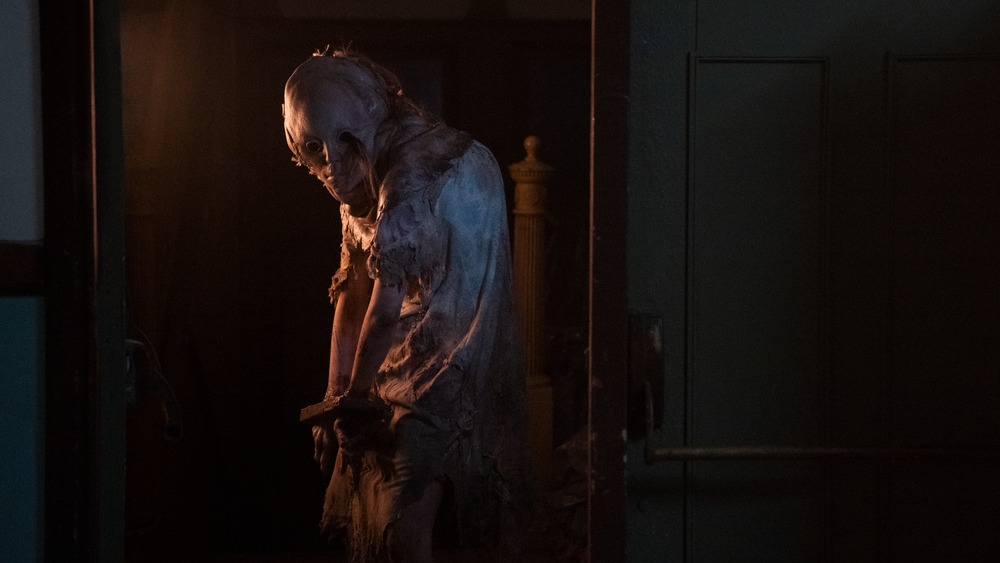Welcome To Raccoon City lacks the stupid majesty of the previous Resident Evils
Where have you gone, Paul W.S. Anderson? The zombies turn their lonely eyes to you
Film Reviews Resident Evil: Welcome to Raccoon City
Among the key points in Roger Ebert’s one-star review of genre hellraiser Paul W.S. Anderson’s 2002 Resident Evil: the deafening clangs inexplicably emanating from unmoving doors and metallic objects, the goofy opening narration, the boneheaded dialogue that follows, the brazen illogic of its ticking-clock plot, and the unintended comedy of an unsurvivable laser-trapped hallway. At the time, he was far from alone in his distaste for this orgy of blood and CGI, but a reclamation effort has improved the film’s reputation in the years since its release. Though at times powerfully, magnificently stupid, this unlikely cult object and its many sequels modeled a consistent industrial-nightmare style and set of thematic preoccupations, as valid an authorial signature as anyone else’s. Those inclined to search for it could find a demented kind of lowbrow brilliance under the thick layer of viscera.
Alas, there’s no covert greatness to the just-plain-underwhelming Resident Evil: Welcome To Raccoon City, a reboot totally bereft of the visual distinction or creative personality that often made its predecessors intriguing diamonds in the rough. Gone is Anderson’s innovative fusion of practical and nascent digital effects; the occasional existential pondering of identity, humanity, and how mega-conglomerates degrade both; and the charisma dynamo of a cocktail-dress-clad Milla Jovovich, the reigning muse in the Cinematic Wife Guy Hall of Fame. They’ve all been replaced by nothingness, a marked lack of flavor rather than a decisive new one. The evident mandate to keep this IP active and generating profits looks especially hollow in a zombie film indistinguishable from any other beyond its proper nouns.
Anderson’s canny liberties (heads-up displays and first-person vantages absent from the console classics but generally redolent of their medium) have been walked back, as director Johannes Roberts restores the feel of the source material to bland ends. Though the unimaginative shootouts may be loyal to the letter of the games, they lack the Mountain-Dew-charged kineticism that such a circumstance calls for. The Gigeresque hallways are now unremarkable mansion interiors suggesting a particularly high-stakes round of Clue, the bulk of the action shifted from the laboratory facilities of the nefarious Umbrella Corporation to the home of its founder, a trade down that’s of a piece with Roberts’ strict constitutionalist attitude of text over texture. There’s no sight of Alice, Anderson’s invented protagonist, or the taunting hologram moppet known as The Red Queen. In case the genuflection to the fandom wasn’t clear enough, the reboot takes us back to 1998, the previous films’ chilly futurism now softened into a moldy nostalgia for the games’ heyday.
At any rate, the objective remains the same: a crack squad must contain a virus transforming its casualties into the sprinting dead before the ghouls get out and infect the planet. It’s almost impressive that a film about the suppression of a pandemic in the making, shot under COVID protocols, could still seem so utterly detached from our present moment. It’s an unwitting Lab Leak Theory: The Movie, with zero effort made to address what that might mean in the context of a world more paranoid about quarantine protocols than ever.
Roberts’ script instead puts its chips on mythology, foregrounding Claire (Kaya Scodelario) and Chris Redfield (Robbie Amell), siblings with a dark link to the cruelties of Umbrella. When the plot grows more involved than mowing down waves of enemies, it’s to explicate their connection to villainous scientist William Birkin (Neal McDonough), who may not have the best interests of the orphaned Redfields at heart in their flashed-back-to younger years.
Audiences will overlook a lot of narrative-bungling if they’re scared out of their wits, but Roberts’ fundamentals of horror aren’t strong enough to pick up that slack. The cast of monstrosities—such favorites as Mutant Hound, Lots-Of-Eyes Guy, and Exposed-Brain Behemoth—look sharper than they ever have, even if there’s little inspiration in their mayhem. Roberts clearly landed this gig on the merit of The Strangers: Prey At Night, its standout swimming pool showdown set to “Total Eclipse Of The Heart” reiterated here in a handful of set pieces scored by ’90s one-hit wonders. Karaoke staple “What’s Up?” by 4 Non Blondes doesn’t quite fit, just a shade too ironic for the occasion, though the mismanagement of space proves more problematic. Prey At Night turned a trailer park into a playground for a lethal hide-and-seek, its environment more interactive than the interchangeable rooms of the Spencer house.
In this sense, Roberts’ earlier slasher success may be a better video game movie than this one, mired as his latest is in jump scare convention over you-are-there intensity. This misbegotten brand refresh exhumes a franchise that had been laid to rest and jolts it back to life in a manner most frightfully unnatural, the result a ghastly, soulless husk of its former self. The film itself is a more disturbing zombie than anything it can put on screen.